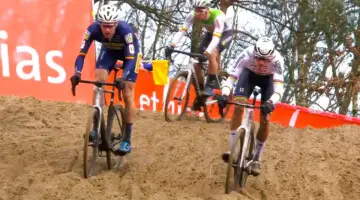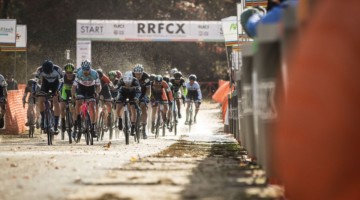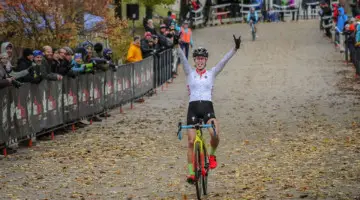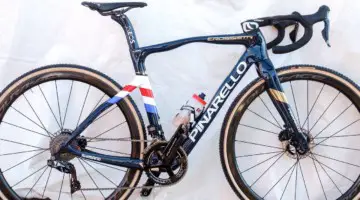If you haven’t noticed yet, we’ve tweaked our approach to covering Nationals bikes this year. Rather than try to capture every winning bike (we still have many of them), we’re honing in on the interesting stories and machines.
Scott Funston’s Kona Major Jake fits these criteria not only because it strays from relying on the latest and greatest frames and builds, but also because of his strategic decision to outfit his B bike specifically for a last-lap surprise attack.
We bring you the back story of Funston’s bike from the back half of his last lap.
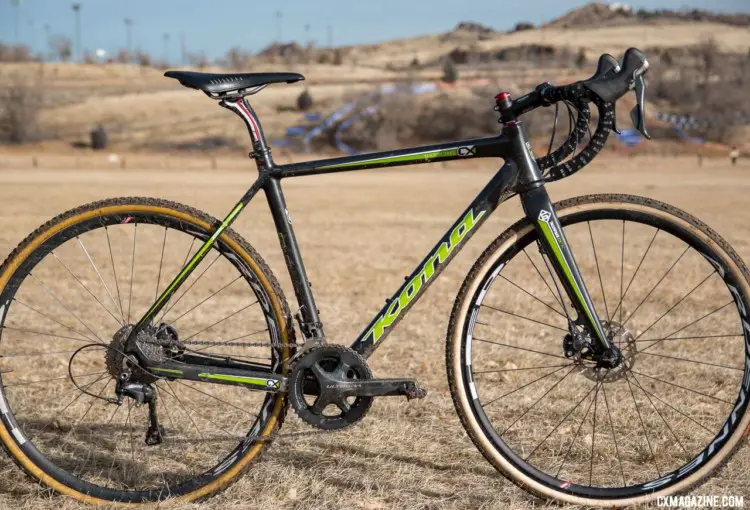
Scott Funston's Major Jake cyclocross bike shows you don't need the latest and greatest to land on the podium or the Worlds team. He swapped bikes for the last half lap in hopes of a surprise riding attack on the run-up. Junior 17-18 Men. 2018 Cyclocross National Championships. © C. Lee / Cyclocross Magazine
A Run Through the Pit to Ride the Hill
A big part of racing cyclocross successfully is strategy. For Scott Funston’s Junior 17-18 Nationals bid, his strategy involved a combination of tactics and equipment that extended all the way to his bikes. Going into the race, racers knew the run-up could be decisive. Most competitors ran the hill, but in multiple pre-rides, Funston and his Rad Racing NW teammate Calder Wood were able to ride it cleanly.
On the day there was little reason to need a pit bike outside of a mechanical, leaving Funston free to experiment and gamble with his second machine. He set up his starting bike for fast racing using an 11-30 cassette and Dugast Small Bird tires.
https://www.youtube.com/watch?v=ks87jn5a9ZQ&feature=youtu.be
While Calder Wood used his ride-up skills during the race, Funston kept his trump card hidden in the pits. There, his mechanic held his B bike, equipped with a lower 11-32t cassette and a combination of Challenge mud tires — Limus rear, Baby Limus Team Edition up front — specifically for the purpose of riding the run-up.
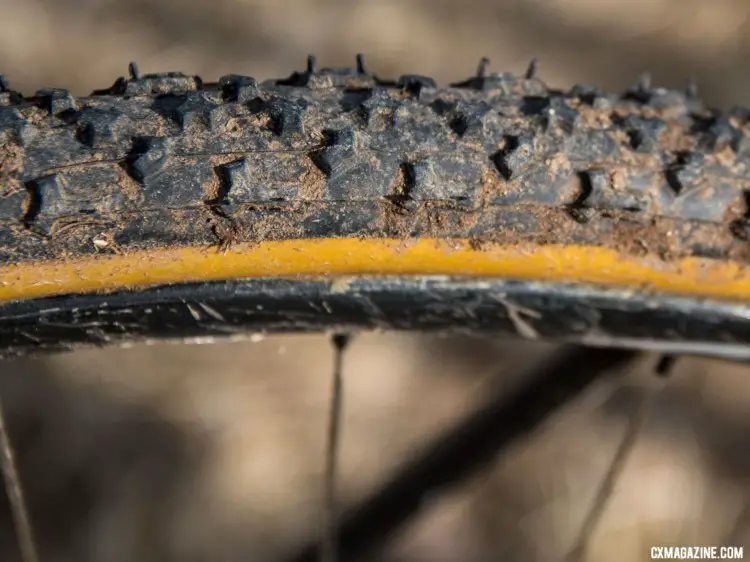
Funston's second bike featured Challenge tubulars. He ran this Limus in the back for traction for his surprise ride-up of the run-up. Unlike his front Baby Limus, it was not a Team Edition model. 2018 Cyclocross National Championships. © C. Lee / Cyclocross Magazine
Funston hoped that if he found himself in a close race, he’d be able to swap bikes, remain in the lead and launch a surprise ride-up attack on the run-up and soar to victory.
With a half lap to go, fellow Montana Cross Camp attendee Ben Gomez Villafane got a small gap on Funston on the Belgian stairs. Funston still swapped bikes, let his Limus knobs dig in on the climb and shocked the announcers, who did not see Wood doing the same earlier.
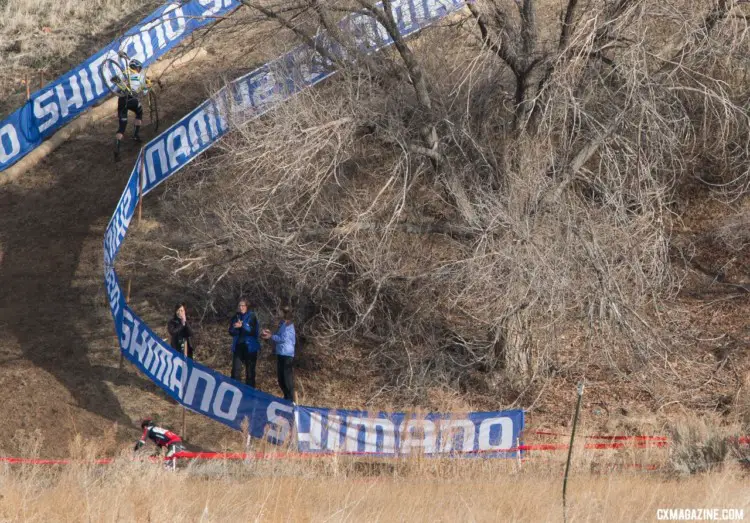
Scott Funston readies to ride the run-up in a last-ditch effort to catch Gomez Villafane on the final lap. Junior Men 17-18. 2018 Cyclocross National Championships. © A. Yee / Cyclocross Magazine
You can watch Funston's climb in the USA Cycling race replay. Based on our estimated timing, riding the hill appeared to take the same amount of time as running it.
While the plan did not yield the result Funston was hoping for, we caught up with him for a closer look at the bike that almost won a race.
Older Does Not Mean Obsolete
Funston’s pit bike is a 2016 Kona Major Jake, one of the company’s two carbon cyclocross offering from that year. As a two-year-old 2016 model, it features older road disc standards such as post mount calipers and 135mm quick release dropouts. While Kona overhauled the Jake platform for 2018, unveiling the new 2018 Major Jake at Sea Otter, Funston’s bike uses a more traditional ’cross geometry with a higher bottom bracket, shorter wheelbase and steeper head angle versus the current bike.
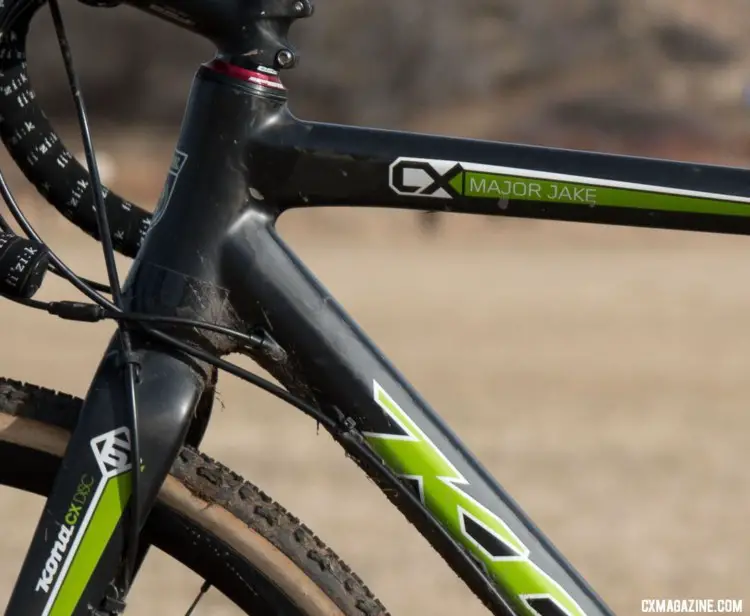
Although redesigned since, Funston's carbon Major Jake from 2016 proved it was nowhere close to its expiration date. Shift cables are routed internally while brake hoses stay outside. 2018 Cyclocross National Championships. © C. Lee / Cyclocross Magazine
Funston’s bike features Shimano ST-R685 hydraulic-mechanical shifters paired to Shimano Ultegra 6800 derailleurs. The front FD-6800-B derailleur was the integrated clamp variety as the 2016 Major Jake did not have a front derailleur mount. For Nationals, Funston relied on a RD-R6800-GS long cage rear derailleur to accommodate the Shimano 11-32 cassette. The two extra teeth got him up the hill without a run.
Stopping is handled by BR-R785 hydraulic Ice Tech calipers paired with 140mm Shimano XT centerlock rotors. His crankset is a Shimano Ultegra 6800 model, equipped with Shimano Ultegra 46/36t chainrings. Power is applied through Time ATAC XC8 pedals, a relatively rare choice nowadays, but the choice of World Champ Wout van Aert.
Funston reduced his carbon footprint by rolling on alloy HED Ardennes tubular wheels. His 2016 bike hails from before the thru-axle movement, and perhaps to the joy of his pit crew, happily relies on quick release wheels. Funston avoided external cam quick releases and instead swapped in a set of Mavic internal cam skewers to keep his wheels secure.
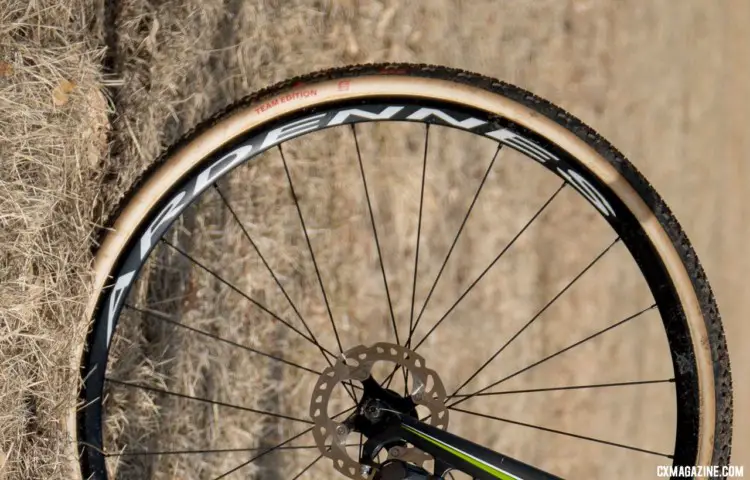
No carbon footprint here. Funston rolled on HED Ardennes alloy tubulars and up front relied on a Challenge Baby Limus for his final half lap. 2018 Cyclocross National Championships. © C. Lee / Cyclocross Magazine
Funston’s cockpit consisted largely of FSA components, with a K-Force setback seatpost, alloy stem and incredibly deep drop bars. Funston rode a Fizik Arione saddle and used the Italian brand’s bar tape as well.
See the gallery below for an in-depth look at Funston's Kona Major Jake. For more from Reno, see our dedicated 2018 Reno Cyclocross Nationals page.
Andrew Yee contributed to this profile.
Scott Funston’s 2018 Nationals Kona Major Jake Cyclocross Bike Specs:
Frame: 2016 Kona Major Jake, full carbon, tapered head tube, internal shift cables, external brake cables, 135mm QR dropouts
Fork: Kona, full carbon, 100mm QR dropouts, tapered steerer
Shifter: Shimano ST-R685 Hydraulic Disc Shifter
Brake Caliper: Shimano BR-RS785 IceTech Hydraulic Caliper, post mount
Rotors: Shimano XT Ice Tech, 140mm, Centerlock
Rear Derailleur: Shimano RD-R6800-GS
Front Derailleur: Shimano FD-R6800-B
Crankset: Shimano FC-R6800, 46/36t
Cassette: Shimano 11-32t
Chain: SRAM 11 speed
Stem: FSA
Handlebar: FSA, Fizik tape
Seatpost: FSA K-Force
Saddle: Fizik Arione
Pedals: Time XC8
Rims: HED Ardennes alloy tubular
Tires: Challenge tubular, Baby Limus front, Limus Team Edition rear, 700x33mm











